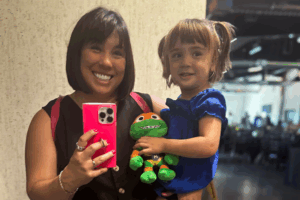Our principal, who happens to be my husband, planned the best back-to-school day ever with both the staff and students — a parade down Main Street. Even though the parade was the highlight of the day, the build-up to the parade stuck with me. The parade and rest of the back-to-school activities centered on a theme — nobody watches the parade.
Join the Parade
This idea, inspired by Bob Goff and Donald Miller in “A Million Miles in A Thousand Years,” encourages people to participate. Nobody can watch the parade. They can only be in the parade.
I keep thinking why this theme and why this year? Why would I encourage my own children and students to join the parade and participate in one or more student organizations? First, as a parent, I want our children to be a part of something bigger and make a difference. As a teacher, I want children to develop and enhance their skills as an extension of the classroom.
Being part of a student organization hugely impacts a student’s educational experience. My husband and I have already noticed the positive impact they have had on our daughter during her junior year. Because of this, we’re encouraging our two younger children to be involved in groups beyond the regular school day, too. But what are our children getting from joining the parade?
Develop Soft Skills
The essential soft skills, also known as people skills, teach students how to work with others, communicate with others and enhance critical thinking skills. Students not only enhance these soft skills in student organizations, they also learn to interact with small and large groups and develop time management and organizational skills.
Explore Interests
Student organizations give our children the opportunity to explore interests and expose them to other learning opportunities. For example, our oldest daughter has no interest in accounting or business law. Yet, she is part of a business organization which allows her to understand the importance of the business world.
Develop Leadership Skills
Student organizations encourage leadership. We are all leaders, but whether we choose to be a positive one or a negative one is up to us. Through these groups, students can learn to develop characteristics that we admire in effective leaders: trailblazer, honest, inspirational, competent and fearless.
Unfold a Purpose
Student organizations provide a multitude of opportunities to serve others. Through serving others, our children learn to be part of something bigger than themselves. They see firsthand the reward of giving their time and talents to others. As parents, we get to see our children take pride in their work, learn to love the process and grow a thankful heart.
Student organizations are a great way to develop all these skills and so much more! Most importantly, our children will be joining the parade, not watching.

Shelly Mowinkel
K-12 & Teens
My husband and I have three kids. Our oldest is a freshman in high school, and our youngest is in second grade. Most days, I feel like we are a “tag-team chauffeuring” service, yet I wouldn’t have our life any other way. Not only I am a business/technology teacher at Milford, I am also the district technology integration specialist. I love teaching because I get the opportunity to make those around me better. My hope is that, through my blogging, I am able to inspire, encourage, and share with you my adventures of being a wife, mother, and professional.









